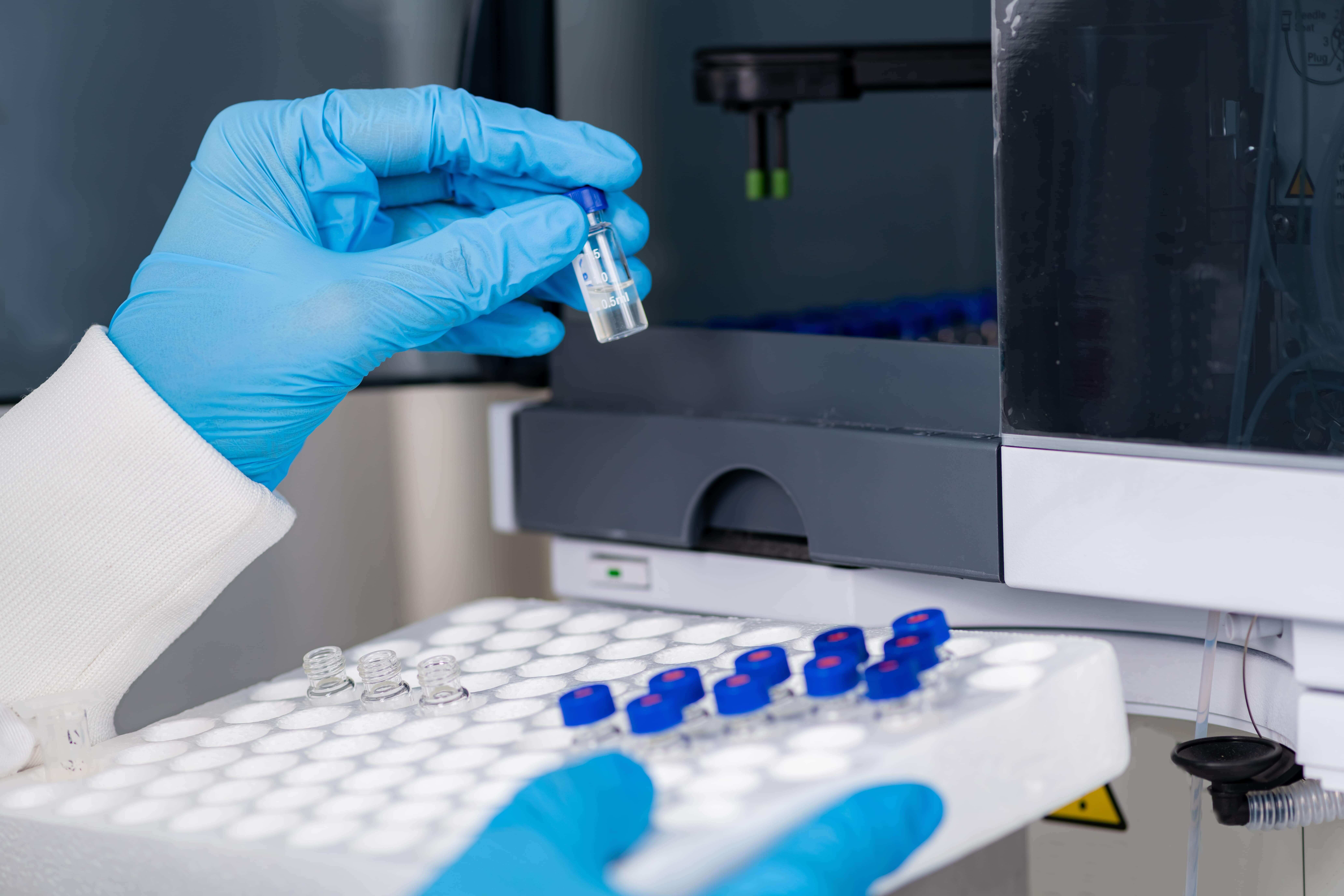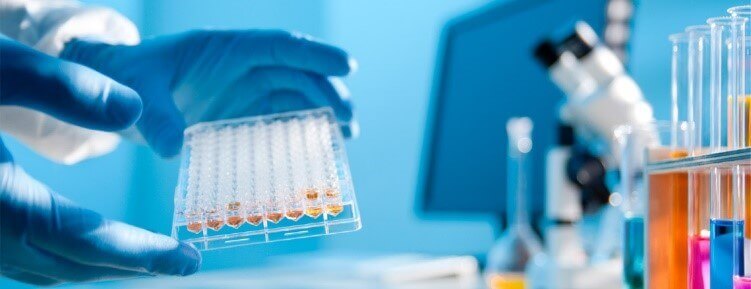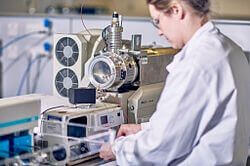
Aug 20, 2020
Liquid chromatography mass spectrometry (LC-MS) is an analytical chemistry laboratory technique for identification, quantitation and mass analysis of materials.
Similar to HPLC/UPLC, a pump is used to provide a continuous flow of a solvent into which a dissolved sample is introduced. Analytes within the dissolved sample are then separated based upon their intrinsic affinities for both a “mobile phase” (typically a buffered solvent) and a “stationary phase” (porous solid support with specialized coating). After the analytes in the sample dilution are separated, they pass through a UV detector and into a mass detector.
The mass detector can be equipped with probes to perform either atmospheric pressure chemical ionization (APCI) or electrospray ionization (ESI). Both APCI and ESI are similar in that the ionization of the analyte(s) of interest occurs at atmospheric pressure. APCI is more effective than ESI with non-polar species in specialized circumstances, as the collisions with the reactive gas may provide the molecule with a charge ([M+H]+ ions).

For common circumstances, ESI nebulizes the sample producing ions that are either positively or negatively charged. Minimal (or no) fragmentation occurs, allowing for determination of the molecule’s molecular weight.
Once the parent ions are produced, they may be trapped using an ion trap (IT) and subjected to further fragmentation experiments, the number of which depends on the concentration of the analyte. For each experiment, fragment ions specific to the parent ion are be observed and can provide valuable information about the compound of interest.
As an additional option, EAG can perform LC tandem MS (LC-MS-MS) experiments with customized method development. Instead of being trapped using an ion trap as discussed above, ions migrate through a series of mass analyzers undergoing exclusion and fragmentation (also referred to as MS2) for highly sensitive and selective mass analysis using a triple quadrupole mass spectrometer.
For both UV and MS responses, the measured peak area or height is concentration-dependent and may be used to quantify the component.
• LC (both reverse and normal phase) affords great range of chromatographic separation options
• Provides both identification and quantitative information
• Enhanced mass resolution (QE) allowing for structural elucidation
• Ability to monitor both positive and negative ions during a single run (IT)
• High specificity of detector. No need for confirmatory detection method (MS/MS)
• High sensitivity. Can detect some compounds in the parts-per-billion and -trillion ranges (MS/MS)
• Excellent reproducibility when stable labeled internal standards are available (MS/MS)
Mass spectrometry (LC/MS/MS and LC/HRMS) produces highly sensitive, rich nonclinical and clinical bioanalytic data, making it the method of choice for performing quantitative analysis of small and large molecules.

Ranging from a simple “dilute and shoot” to numerous popular techniques currently in use, a biological sample preparation technique should be carefully selected to meet the goals of the project. A strategic study design considers how to improve the specifications of method development, increase speed of analysis, and provide excellent results while complying with regulatory standards. Well executed mass spectrometry services pay close attention to assay sensitivity, duration of the assay over its lifetime, sample complexity, increased productivity and, when relevant, the use of automation for large numbers of samples.
The most common biological samples are plasma or serum for pharmacokinetics, drug clearance, half-life, and bioavailability determination, while urine samples aid determination of compound elimination.

Developing robust chromatography is key to the success of a quantitative mass spectrometry bioanalytical method. The goal of the chromatographic process is to separate the analyte(s) of interest from both endogenous interferences and drug metabolites. Coelution of endogenous metabolites or other endogenous or exogenous species may cause ion suppression or ion enhancement, both are detrimental to the development of a bioanalytical assay.
Selecting the most promising conditions requires knowledge of retention characteristics, resolution, slope of gradient, and retention profile of metabolite(s).
This understanding, combined with knowledge from in vitro and animal experiments, is the foundation of informed decisions. Conferring frequently, our global network of bioanalytical scientists can pool available resources to optimize your method.
Optimizing conditions for mass spectrometry detection of the compounds of interest requires evaluation of the MS response and development of a multiple reaction monitoring (MRM) methodology.
In doing so, we ask several questions:
Do the compounds need chemical modification to be detected?
What is the best mode of ionization for detection, such as atmospheric pressure chemical ionization (APCI) for electrospray ionization (ESI)?
What polarity provides the best response?
The process can be demanding and involves a series of iterations to reach an optimal set of conditions that maximize the necessary concentration and sensitivity for a specific assay. For this reason, companies of all sizes often outsource their mass spectrometry projects.
